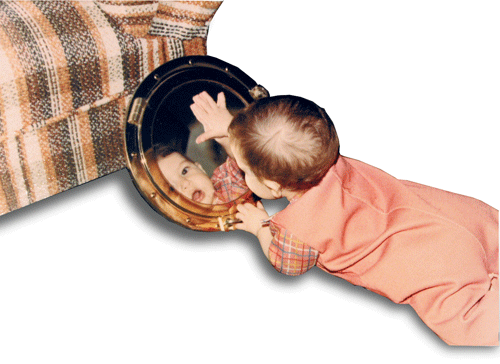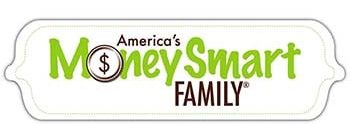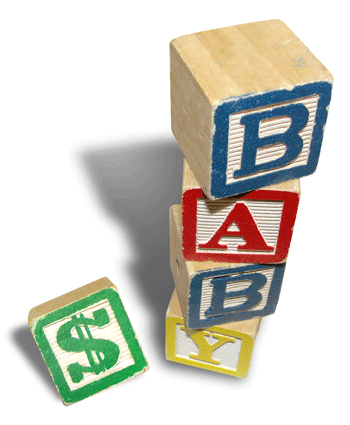If you’re having a baby and want to save money we’ll show you how to raise a baby on a budget.
To us they’re cuddly, snuggly and sometimes slobbery — and to marketers, they’re a gold mine. We’re talking about babies and what it costs to diaper, feed, clothe and entertain them in their first years.
Some experts predict — and hope — that you’ll spend somewhere between $8,000 and $10,000 before Junior’s first birthday.
Believe it or not, in these situations, when marketers push a multitude of expensive products, you may find the greatest savings.
Yes, you can beautifully outfit your baby without spending what advertising executives hope you will. Why?
Because many people do spend outrageous amounts of money on things that every baby “needs.” Most of these items are barely used because babies outgrow clothes and toys so quickly.
You are guaranteed to find bargains galore at garage sales, consignment shops, and thrift stores. Outfitting our kids didn’t cost us an arm and a leg— here are 5 ways to save a ton of money from us and some other thrifty parents:
TABLE OF CONTENTS
1. SAVE MONEY ON BABY FOOD
The U.S. Department of Health Services reports that 68.4 percent of women breastfeed their infants. This number is up more than 30 percent from 1990 statistics.
The number of moms choosing to nurse their children until six months of age has increased from 18 to 31 percent in the same period.
Not only is nursing free, but it is much better for your child than bottle-feeding. We’ve never regretted going this route. With average annual costs for formula ranging from $1,500 to $2,000, it’s worth considering. Here are more ways to save on feeding.
The Value of Nursing Your Baby
If we look at it from a purely financial perspective, it is much cheaper to nurse a baby than not. I was able to nurse a second baby, but not the first. Many people supported my decision to try again and it was a totally different experience — I would encourage every mom to seriously consider it.
Take a class, get support from your spouse and friends then go for it. Every week you nurse reduces formula costs. Also, spilled breast milk does not stain nearly the way formula can so you’ll save on cleaning costs too. If you can’t nurse, you can’t, but if you can, wow! What cost savings!
Ann Thomas — Bridgeville, PA
To learn more about breastfeeding, visit LaLecheLeague. We disagree with some of their information on child discipline and setting schedules for babies, but their feeding information is right on.
Formula Savings
To save money on formula, contact the manufacturer and get on their mailing list — they’ll usually send you coupons for their products.
Susan Schellman — Winchester, VA
DIY Baby Food
Making my own baby food saved a lot of money. I used regular ice cube trays to freeze pureed fruit, veggies, or even casseroles that the rest of the family ate. I stored the food by type in zippered bags and pulled out two or three cubes for each meal. I could use two or three of the same type, or mix different foods together for variety. The book, First Meals by Annabel Karmel describes the process and has some great ideas for every stage of feeding.
Erin McGever — Phoenix, AZ
We bought very little baby food for our kids —maybe a few jars when we had “killer” coupons. As they grew teeth and showed interest in eating, we mashed what we were eating and gave them little bits to chew on. They loved puffed rice and wheat cereals, which are inexpensive and virtually melt in kids’ mouths.
2. SAVE MONEY ON DIAPERS
Babies go through diapers like water — using between five and 10 per day. Being frugal and researching options can save tons of money each month.

Diaper Cost Comparisons
Disposable diapers cost about 30 cents per diaper (less for infants and more for toddlers).
A diaper service costs about 18 cents for each cloth diaper.
If you buy and wash your own cloth diapers — as we did— after the initial purchase, the per-diaper cost to wash them is about 1.5 cents. Based on using an average of seven diapers per day (2,555 per year), your annual cost will be:
- Disposables: $766.50
- Diaper Service: $459.90
- Home cloth diapers: $76.65 (plus diapers).
Just be aware, there are lots of options out there for cloth diapers. You can spend as little as 80 cents per diaper for the regular flat, white, you-fold ’em diapers up to $14 each for fancy, fitted, snap- or Velcro-close diapers.)
How We Washed Cloth Diapers
To reduce odor from soiled cloth diapers, we filled a 10-gallon diaper pail halfway with water and a few “glugs” of bleach—there may be a better solution now because bleach tends to weaken cotton fibers.
After rinsing diapers in the toilet, we placed them in the bleach water to soak. A few days later, we’d drain the wet diapers in the bathtub overnight then put them into the washing machine in the morning. It worked for us and might work for you too.
Because our last two kids were in diapers at the same time and Annette was busy homeschooling the other three, we changed our philosophy.
Remember that we were totally debt free (including the house) and had excess income at the time. To save her sanity and time, we used disposable diapers.
She used coupons and stocked up when she found great deals. If we couldn’t find a great deal, we bought store brands to save money.
Using Cloth and Disposable Diapers
Today, using only cloth diapers might not be realistic. Twelve years ago church nursery workers objected to our use of cloth diapers.
The more realistic choice might be a combination of cloth diapers for home, and disposables for traveling, church or when a baby’s illness requires more frequent changes. But the bottom line is to do what your budget can afford.
And ecologically speaking, the fewer disposable diapers we use, the less we fill up the landfills.
Here’s how other parents are saving on diapers:
Don’t Be a Diaper Snob
While it’s true that some babies have skin sensitivities to certain diaper materials, most do not. Be willing to try off-brand diapers and see what works for you. Watch your cost per diaper. If you are spending more than 20 cents per diaper up through size 4, you are paying too much.
Ann Thomas — Bridgeville, PA
Buy Diapers in Bulk
Buying diapers in bulk is the most cost-effective way to get them. Costco is the way to go if they carry the brand you like (the current cost is between 14 and 26 cents per diaper).
Susan Schellman — Winchester, VA
Cloth Costs Less
Using cloth diapers has been a big money saver for me. I will have spent about $350 to diaper my son from birth to about 30 months old. The cheapest disposables in our area would cost about $900 for the same number of months. Better yet, I can use my cloth diapers on my next child.
Here are some of my other favorite sites:
- GreenMountainDiapers.com — tons of info and how-to’s
- RealDiaperAssociation.com — Good information about cloth diapers
- Mothering.com — Lots of good mothering information
Kelly Eding — Dorr, MI
Diaper Test Drive and Free Patterns
Nickis Diapers offers a 15 day Try, Wash, Love or Return “test-drive” package. They let you try out several different types of diapers before actually purchasing them. They also offer very helpful info about using cloth diapers.
Erin McGever — Phoenix, AZ
RELATED ARTICLE: Money-Saving Tips for Raising Baby
3. SAVE ON BABY CLOTHES
Infants’ clothes are so plentiful at garage sales and resale shops that there’s no reason to pay retail. And you can easily find them in probably less time than a trip to the mall. Plus infant-sized clothes are rarely worn out, although there may be some stains.
Sharing Hand Me Overs
My neighbor and I practice good old-fashioned sharing. We pass back and forth—maternity clothes, bigger sizes for after the baby is born, and baby and kid clothes. We save money and storage space, as well as set a good example for our kids! It’s fun to see our “memories” worn again and again.
Don’t take the price tag on sale items at face value. Ask if it could be on reduced clearance or when it will be reduced. Some stores, such as BabyGap, often have sale things that are not marked at their lowest price. I have found items such as T-shirts that ring up for as low as $0.49!
I purchase basic clothing items for my kids a year in advance at end-of-season sales. Solid-color T-shirts, athletic shorts, and socks are pretty safe bets for the following year. In the rare case, I buy something that really won’t work, I sell it on Ebay or take it to a consignment shop.
Many stores, such as Gymboree and GapKids, have small things that are marked for final clearance, such as socks, underwear, and accessories, in bins next to the register or fitting rooms.
I keep an index card for each of my kids listing shoe styles and sizes, both current sizes and future sizes, in my wallet. As I purchase various shoes for them, I mark them off on the index card. When a big sale or clearance event occurs, I know exactly what I need and what I already have — it really helps avoid duplicate purchases.
Erin McGever — Phoenix, AZ
4. SAVE ON FURNITURE AND ACCESSORIES
Furniture, such as cribs, car seats, swings, playpens, strollers, and high chairs can all be purchased used. At garage sales in higher-income areas, you can often find high-end stuff at 90 percent off retail. Sure, you may have to chip off some creamed spinach, but that is a small inconvenience for a great deal! At one year old, our kids never complained about being put in a used high chair or car seat. Check plastic items for cracks. Over time, plastic can become brittle and, in the case of car seats, can be unsafe.
Work Together
Have trusted family members help in the hunt for needed clothing and other baby items at thrift stores. Babies can thrive on very little in the way of material possessions, but too many people go broke listening to all the hype about what kids “need.”
Jennifer Dahl — Bayard, IA
5. SAVE MONEY ON TOYS
Babies need contact with people (parents and siblings) more than they need colorful “doo-dads” to stare at. Just remember our mantra: Never pay retail. There are toys galore at thrift stores and garage sales. Be sure to disinfect them before letting your child use them. Also check out Burton White’s book, The First Three Years. It gives great recommendations for age-appropriate toys — some of which will cost you nothing. Click here for an age-appropriate toy list based on an article we wrote a while back.
Don’t overindulge your kids with toys. They don’t need much, and giving them too much can over-stimulate and overwhelm them. Fewer well-researched, quality toys will be more enjoyed and useful than a roomful of spontaneously purchased stuff.
Here’s one more resource for great savings:
I would definitely recommend this book to anyone with little kids. Baby Bargains, written by Denise and Alan Fields, has very good advice about sorting through all of the products out there for babies. They have a “good, better, best” recommendation system to help you make choices. They have also written Toddler Bargains, which is another excellent resource!
Erin McGever — Phoenix, AZ
Wrap-Up on Saving Money on Raising Your Baby
The baby phase of life will soon be past, so be sure to spend time enjoying your kids. Being a thorough researcher and avoiding getting sucked into the emotional hype will give you more time to enjoy your little cherub — and more money to put away for a college savings account or retirement.

